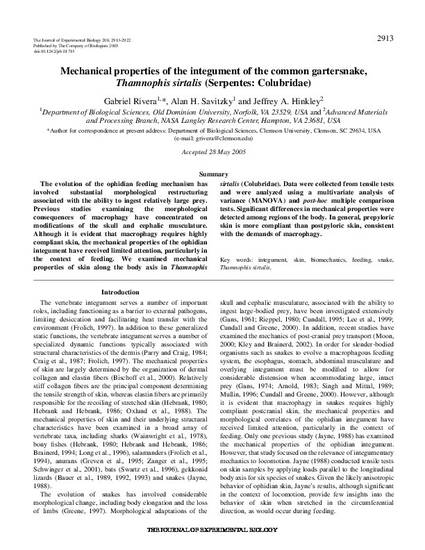
- Biology,
- Biomechanics and
- Zoology
The evolution of the ophidian feeding mechanism has involved substantial morphological restructuring associated with the ability to ingest relatively large prey. Previous studies examining the morphological consequences of macrophagy have concentrated on modifications of the skull and cephalic musculature. Although it is evident that macrophagy requires highly compliant skin, the mechanical properties of the ophidian integument have received limited attention, particularly in the context of feeding. We examined mechanical properties of skin along the body axis in Thamnophis sirtalis (Colubridae). Data were collected from tensile tests and were analyzed using a multivariate analysis of variance (MANOVA) and post-hoc multiple comparison tests. Significant differences in mechanical properties were detected among regions of the body. In general, prepyloric skin is more compliant than postpyloric skin, consistent with the demands of macrophagy.
Web of Science" "Free full-text from publisher -- gold open access."
Rivera, G., Savitzky, A. H., & Hinkley, J. A. (2005). Mechanical properties of the integument of the common gartersnake, Thamnophis sirtalis (Serpentes: Colubridae). Journal of Experimental Biology, 208(15), 2913-2922. doi:10.1242/jeb.01715
